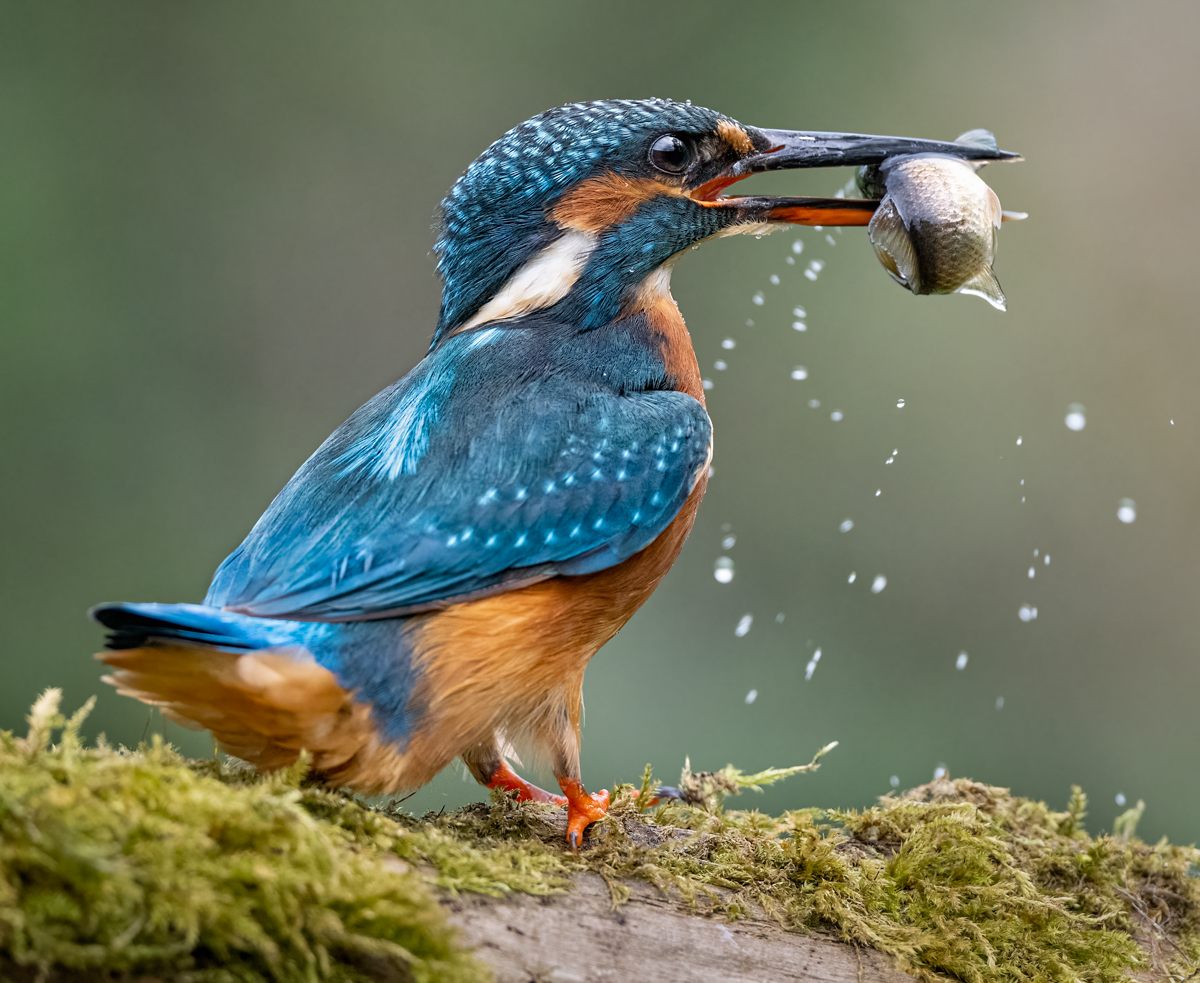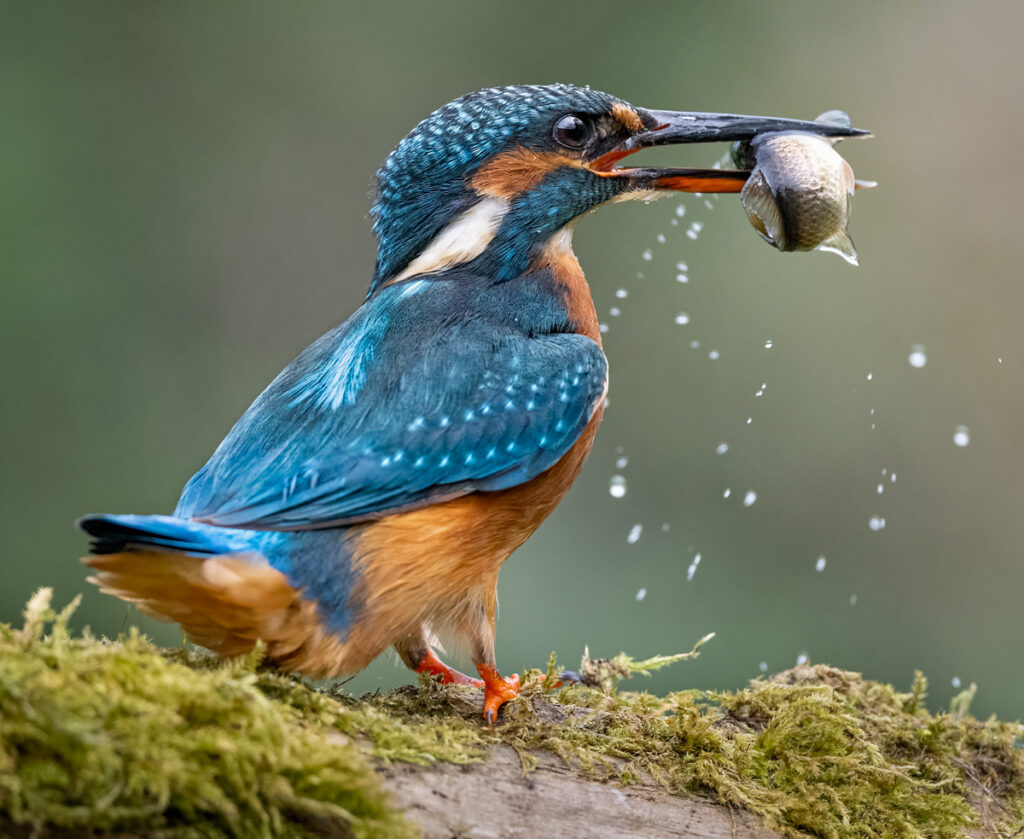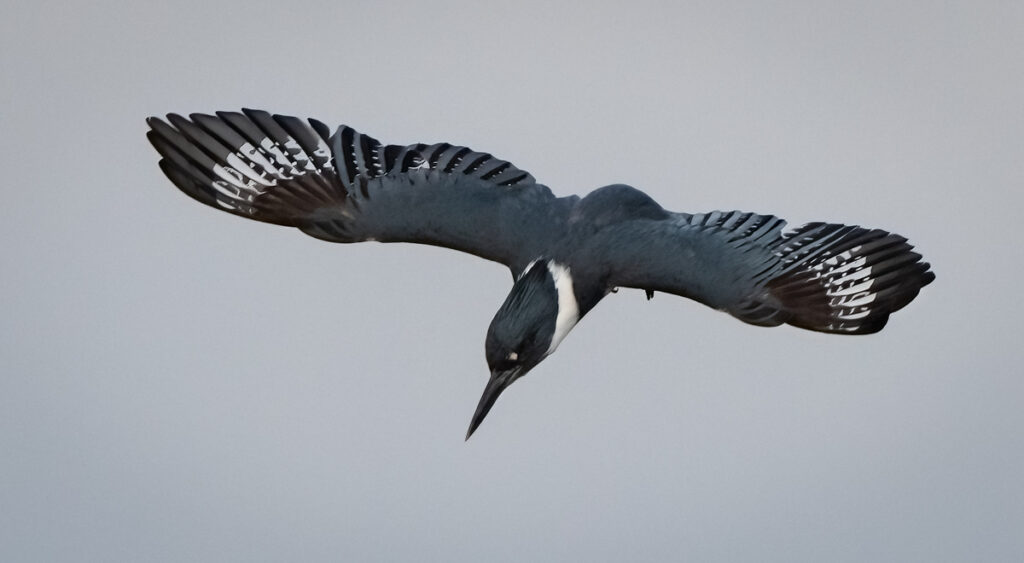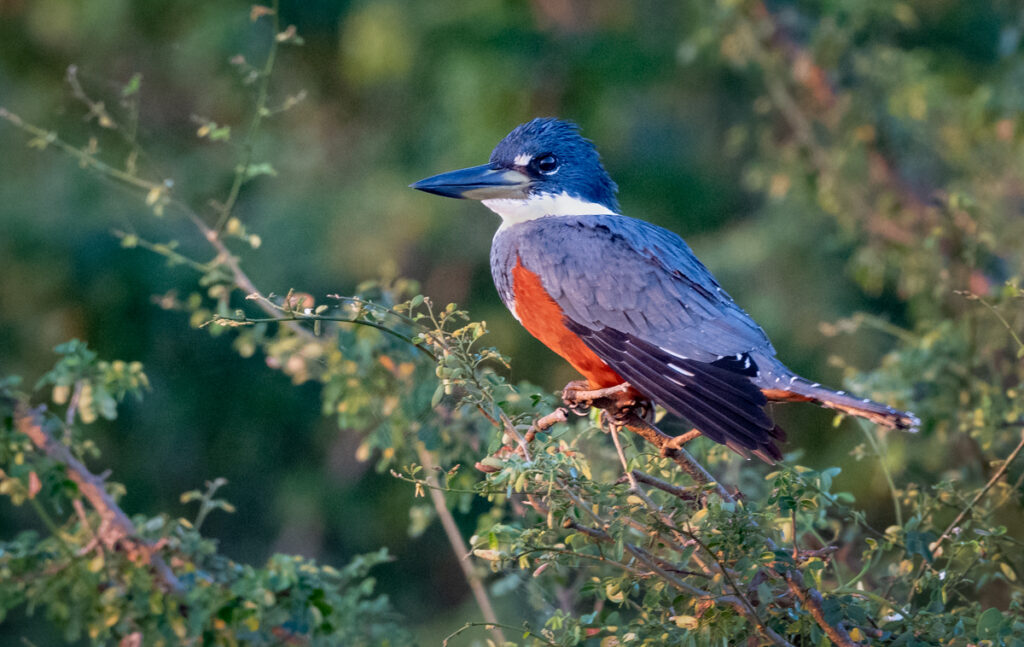
Kingfishers occupy every part of the world except for the icy poles and the driest deserts, and that striking – both figuratively and literally – sturdy bill gives away the identity of every species in the Alcedinidae family. Originating in the Old World around 27 million years ago, there are six species found in North America, and another 110 or so across the rest of the world. Today’s blog takes a look at some of those masters of flashing flight, both near and far.

Kingfishers are distinctive birds, and it’s hard to mistake one for anything else: small to medium-sized, they are often brightly colored, drawing admiration from all that have the fortune to view them. Common colours are greens and blues, but even the browns, blacks and purples catch our eye. That shimmering plumage is not because of iridescence like those other winged jewels, hummingbirds, but because of structural coloration; the very make-up of their feathers scatters blue light much more strongly than red, as in the Tyndall effect that we see in the sky, and in smoke wisping through the air from two-stroke engines. Accompanying this array of plumage is the characteristic wedge-shaped head, often crowned with a tuft or crest, and the body is stocky and compact with short tail feathers at one end and that awesome and dangerous dagger of a bill at the other.
Belted Kingfisher
Belted kingfishers are a reasonably common sight in the US, with their breeding range stretching across the whole of North America, but other species have occasionally made a star appearance. In 2010, two Canadian birders on a trip south spotted a rare visit by an Amazon kingfisher at Zacate Creek, Laredo, TX. As soon as word got out, people from at least eight states and two Canadian provinces flocked to the popular birding site to catch a glimpse of this large heavy-set bird, noting its similarity to the Green kingfisher, the smallest of the American species. Sharing much of its Central and South American range with the Amazon species, it can also be seen in southern Texas, but the main differences are the size and weight – Greens are much smaller coming in at around 20cm long, whereas the Amazon is almost 10cm taller, and weighs three to four times as much as the diminutive Green.

Not All Kingfishers Fish
Despite the name, not all kingfishers fish. The family is split into three subfamilies: Tree or Wood; River; and Water kingfishers. Tree kingfishers primarily feed on termites and other insects, worms, and small invertebrates. Perhaps one of the most famous tree kingfishers are the kookaburras, native to Australia and New Guinea, and whose name is a loanword from the Wiradjuir language: guuguubarra, onomatopoeic of their call. The laughing kookaburra is the largest kingfisher in the world, and can be up to 47cm tall; it is also perhaps the most used stock audio in the world to portray dense Australian outback settings in movies.

River or Pygmy kingfishers are widespread throughout Africa, Asia and Australia, with one species, the Common kingfisher, residing in Europe and northern Asia. Like their cousins the Water kingfishers, they are master fishers, finding a prominent perch above a waterway and waiting for prey to innocently swim or crawl into view. Both Belted and Ringed kingfishers are large and conspicuous Water birds with noisy territorial calls. The largest Water kingfisher, the aptly named Giant kingfisher, whiles away the hours across much of Africa south of the Sahara, its large shaggy crest, black bill and fine white spots and bands on black wings and tail make it easy to identify if the sheer size of it doesn’t.

Kingfishers are simply beautiful birds and any occasion to see one should never be passed up. Check out your local waterways and lakes, especially any pools in deep forests, and be sure to keep an eye out for their cavity nests, often just glimpsed in the bend of a riverbank where the water is calm and still. We hope you’ve enjoyed the photographs and learning about one of the world’s most uniquely identifiable bird species.


